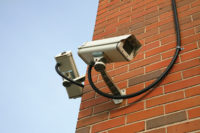The Business Case for Image Quality

The security industry has adopted some bad habits from the IT industry. These habits are most noticeable in systems that can be described as “over built” and “under delivered.” The trend of building overly complex systems creates challenges for systems integrators, and is a huge strain on end user’s security budget. This problem exists due to a lack of knowledge and experience with the complex surveillance technologies used in today’s networked video world. The following illustrates the most common over/under design issues in surveillance systems, which continue to get worse.
Over Pixelated, Under Displayed
One of the biggest problems with most system designs today is a camera and display resolution mismatch. These design flaws waste system processing, networking and budgetary resources. Camera resolutionshave always followed the display standards: VGA, D1, 4CIF, and HD, which are standards that describe both a camera and display resolution. With analog video it is easy to match four CIF resolution cameras into a 4CIF display. With HD and megapixel cameras and multiple image aspect ratios (4:3, 16:9, 9:16), cameras are generating larger images with more pixels than the video display technologies can display without discarding pixels.
Demand for HD and megapixel cameras continues to increase these problems. One major benefit of megapixel cameras has been to increase the pixels per foot calculation used to quantify image quality. A second benefit is the ability to digitally zoom into the image while retaining identifying detail. However, the realities are that megapixel resolutions are being displayed in 16+plus camera views on monitors running less than 1920x1080 resolution, which is 2.1 million pixels. So the resulting situation is 16, 2.1 megapixel HD cameras, (which combined, equals 33.6 megapixels of resolution) on a single display that will discard (33.6 Mp minus 2.1 Mp) 31.5 million (94 percent) pixels of camera resolution. However, the network will still have to carry the traffic, and the workstation will have to decode and process all 33.6 million pixels of data, only to have the display throw it away. This creates a display environment that cannot use the high-resolution camera capabilities without digitally zooming. So in a live view it makes no sense to use high-resolution cameras. A better option is to dual stream a much lower live view resolution, with a megapixel resolution recorded where the digital zoom feature can be used for investigation.
Over Complex, Under Serviced
Another common issue is with overly complicated network design used by the physical security systems integrators who lack expertise with advanced networking technologies. It has become a common practice to design systems that use multicast network designs for live video streams because of the theoretical bandwidth limitations that may exist within a segment of the network. Most systems integrators and IT departments can’t actually service, troubleshoot or support multicast networks because they don’t have the necessary competency. When networks are over complicated they require more service and expertise. Further complicating the problem is the practice of sharing the networking hardware between a customer’s IT department and the security integrators without sharing administration software access to the networking hardware. This makes it impossible for systems integrators to troubleshoot without the IT department, which leads to extended service outages and insecure buildings.
Over Priced, Under Used
Storage and server systems being specified today for surveillance systems are often heavily over priced and under utilized because they were designed for IT data centers and not surveillance systems. The results are security departments that over invest in server and storage technologies that don’t improve the security of the organization, and take budget away from more cameras and better video management software. Many hardware manufacturers who make storage systems are not providing accurate design and engineering requirements, which confuses the industry. The simple fact is that you can add more storage and servers any time after the initial design with little to no disruption to the production surveillance environment.
The Over/Under Lessons
If the industry continues over building and under delivering surveillance systems, the overall market growth will slow down until design competency of consultants, A&E’s, systems integrators and IT departments can catch up. This will only happen when common, standards based design fundamentals are created and adopted by the industry.
Looking for a reprint of this article?
From high-res PDFs to custom plaques, order your copy today!







